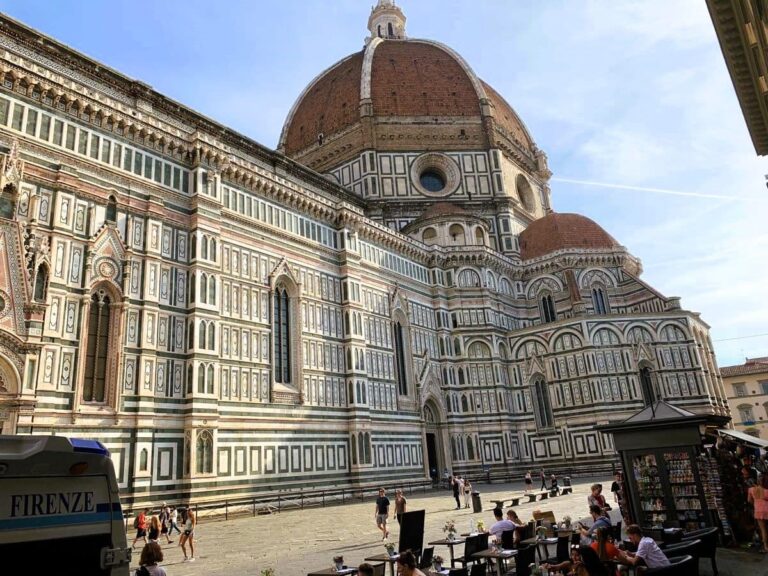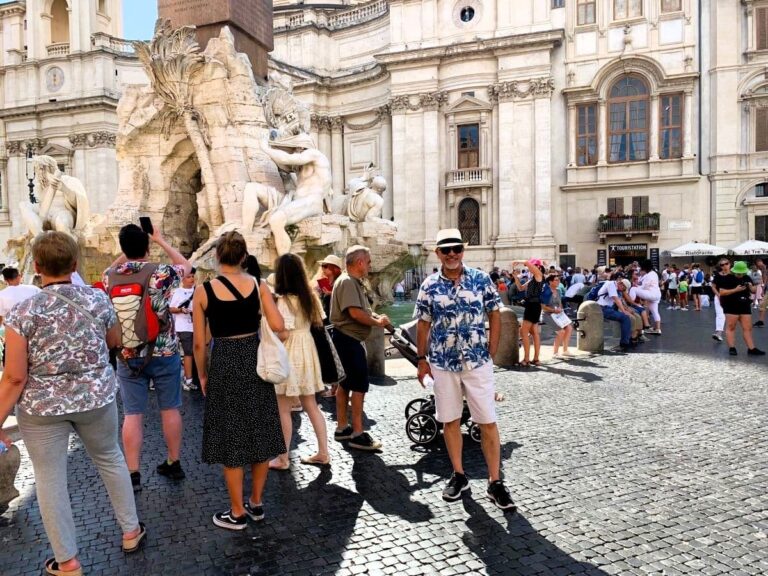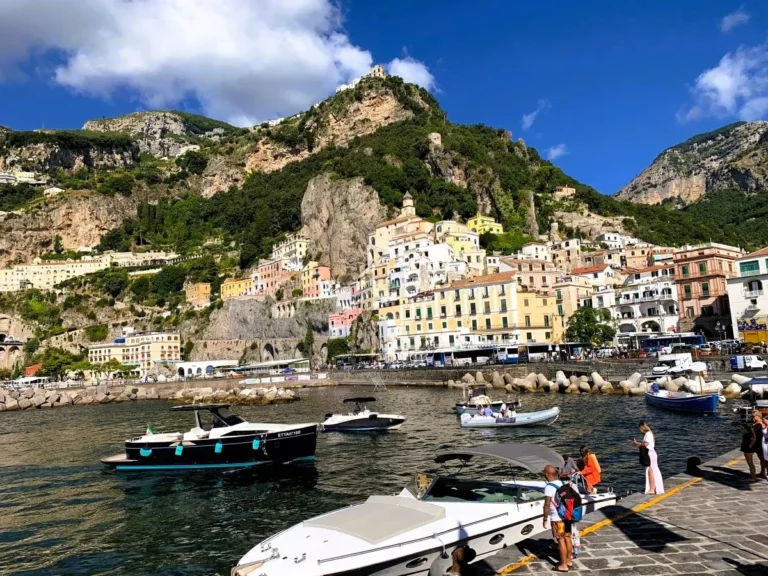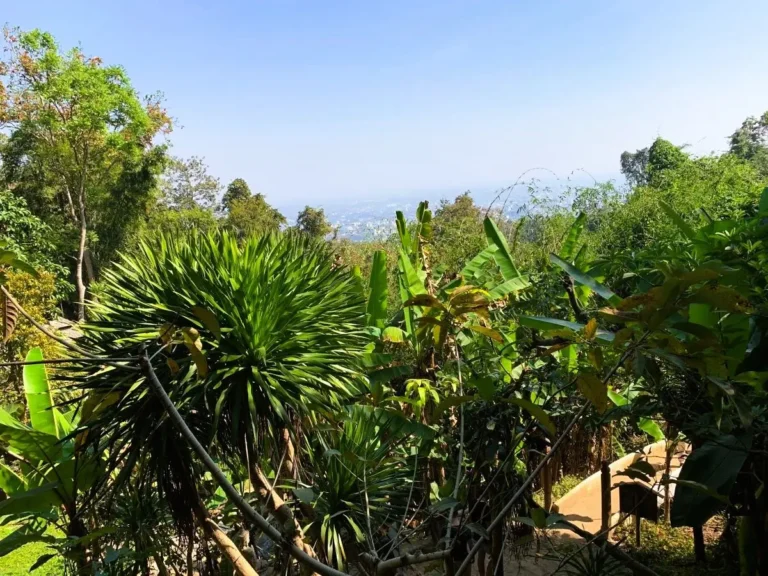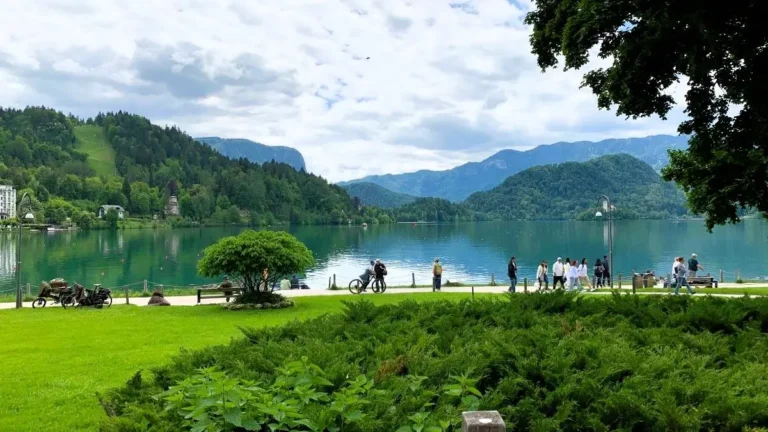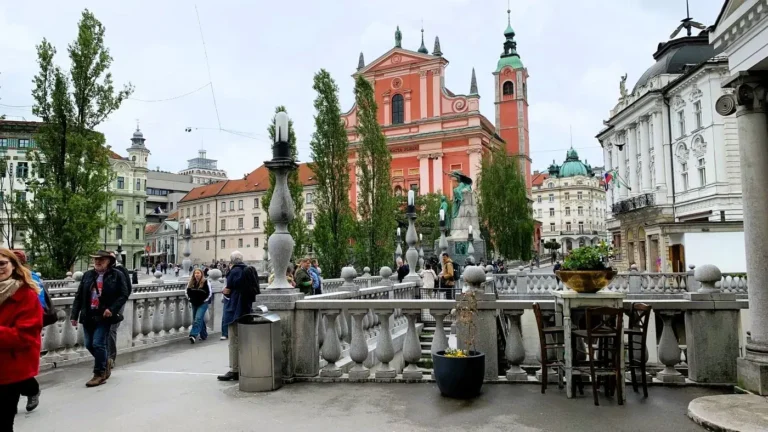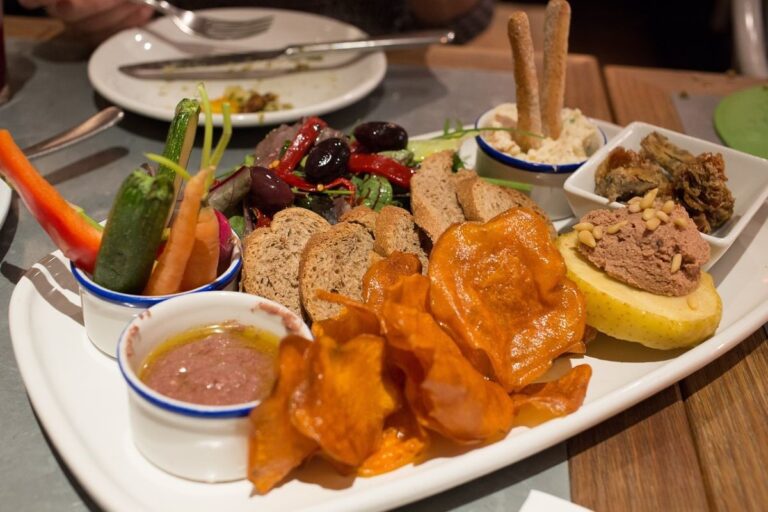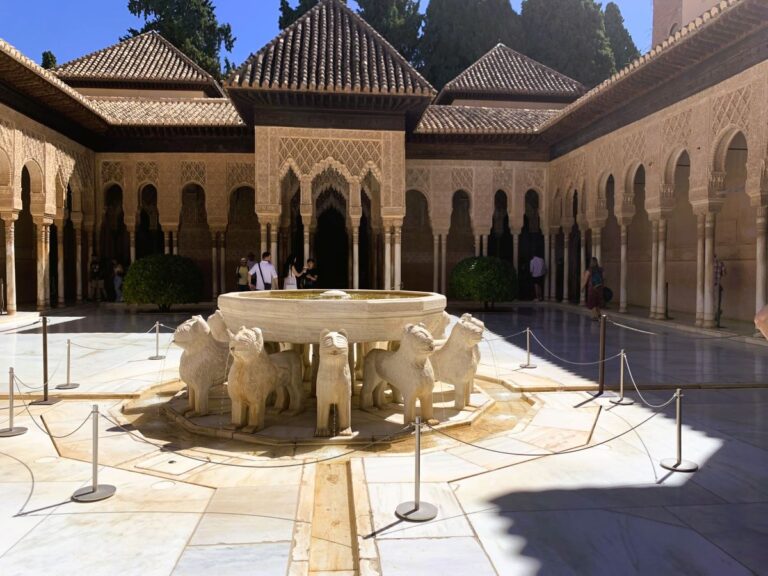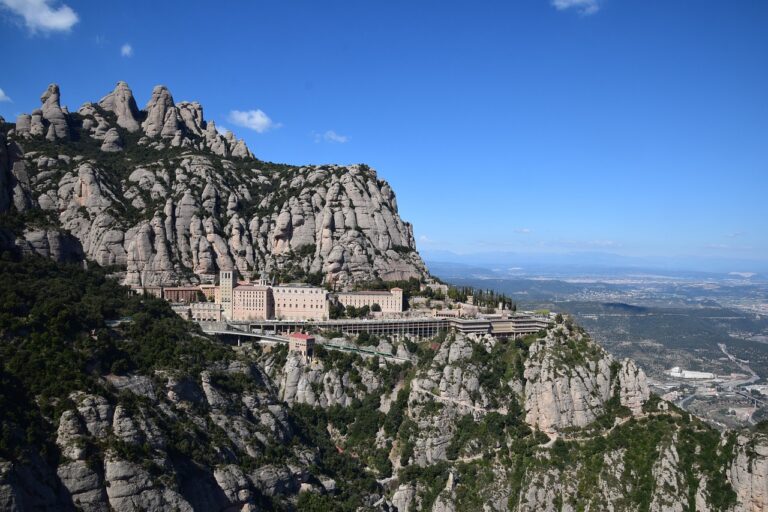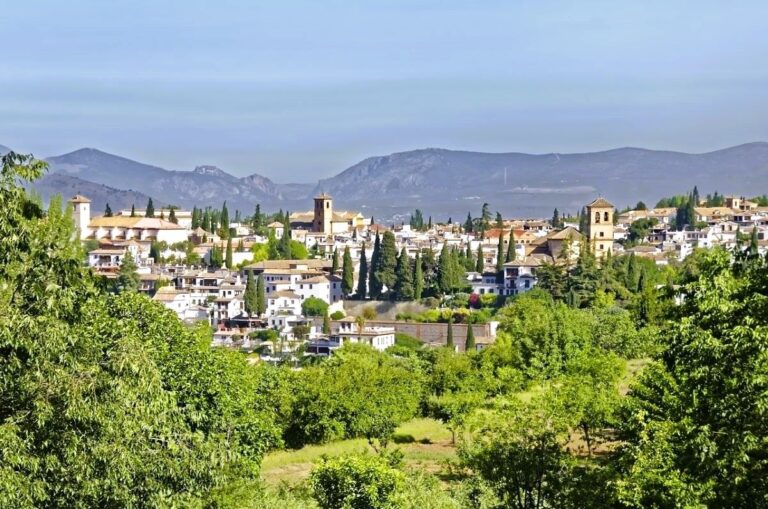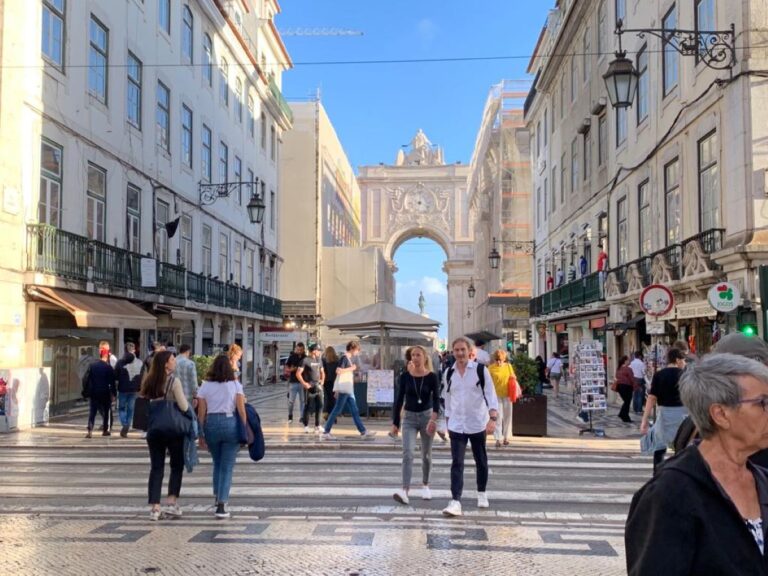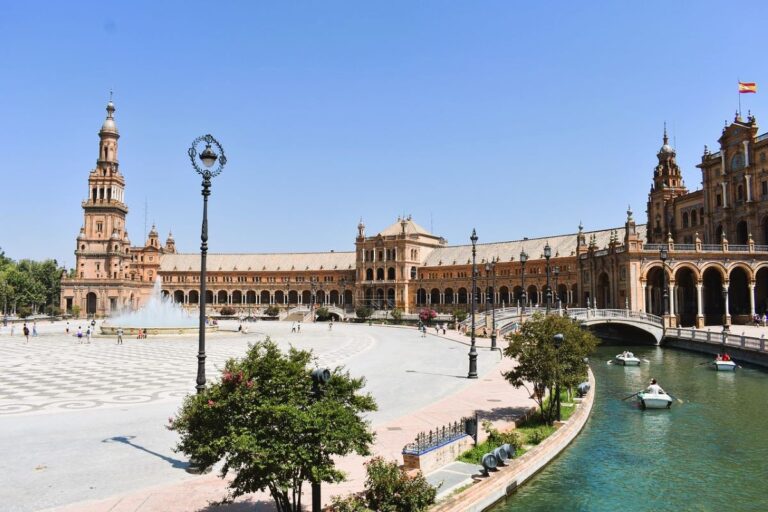Ultimate Serbia Travel Guide: Your Friendly Companion for Exploring Serbia
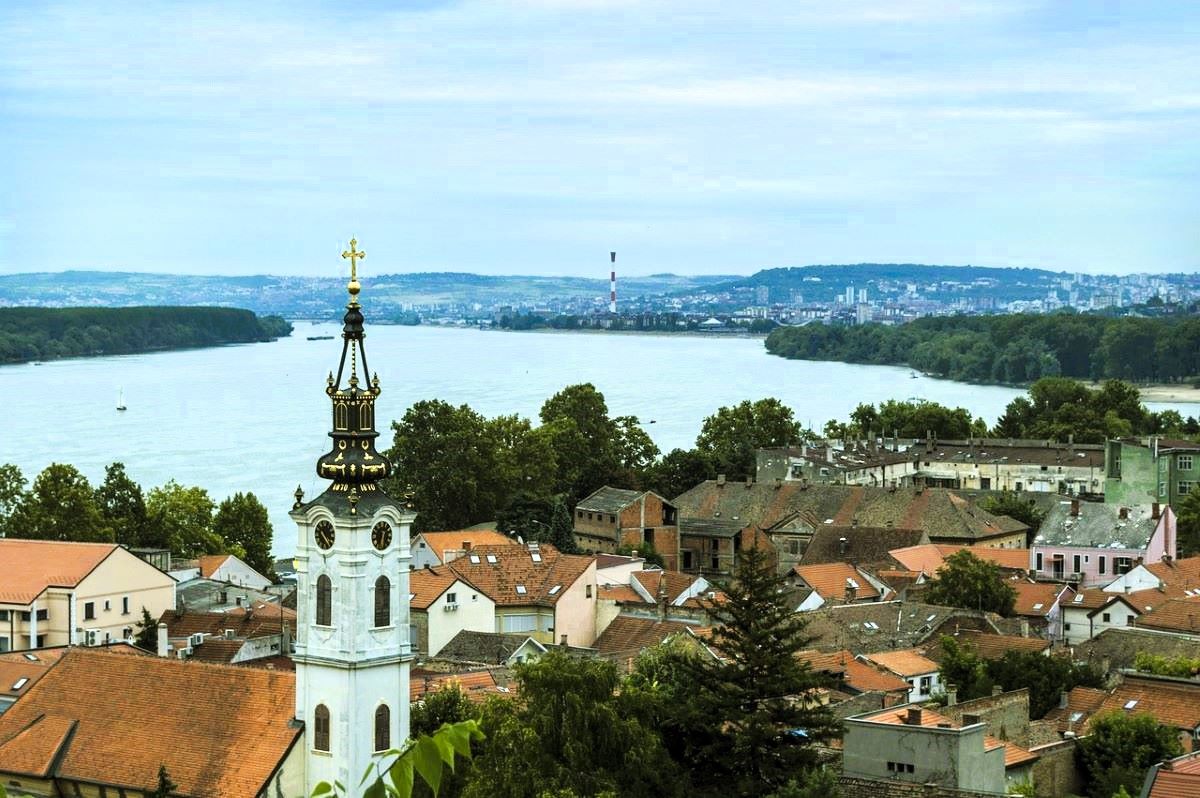
Welcome! If you’re planning your first trip to the heart of the Balkans, this Serbia travel guide is the perfect place to start. Serbia is a welcoming, lively country packed with stunning scenery, rich history, amazing food, and warm-hearted people. The mix of old and new will surprise you.
Whether you love exploring cities, hiking, tasting new dishes, or learning about different cultures, Serbia offers all this and more. This guide covers everything you need to know to travel with ease and confidence.
At a glance – here’s what we’ll be covering in this Serbia Travel Guide…
- Serbian culture
- Language in Serbia
- Food that can and should enjoy in Serbia
- Currency used in Serbia
- Entry requirements for Serbia
- Best places to visit in Serbia
- Best time to visit Serbia
- Public transportation – how to get around in Serbia
- Safety in Serbia – Is it safe to visit Serbia?
- SIM cards
- Plugs and outlets in Serbia: Do you need adaptors/converters, and more..
Related posts:
- The Best Things to Do in Belgrade [2025 Guide for First-Time Visitors]
- Bosnia & Herzegovina Travel Guide [2025]: History, Highlights, and Essential Tips for Tourists
- Is Sarajevo Worth Visiting? Here’s the Real Deal
A Short History of Serbia: How the Past Shapes the Present
Let’s start this Serbia Travel Guide with a very brief history: Serbia’s past is long and colorful. Ancient tribes lived here more than 7,000 years ago. The Romans, Byzantines, Ottomans, and Austro-Hungarians all ruled these lands, leaving their mark on the culture, architecture, and language.
- Medieval Serbia: In the Middle Ages, Serbia was a strong kingdom and later an empire. Orthodox monasteries from this time, many with UNESCO status, still stand today.
- Ottoman & Austro-Hungarian Rule: For hundreds of years, the Ottomans controlled most of Serbia, especially the south. The north was ruled by the Austro-Hungarians. This shaped everything from food and music to the way cities look.
- Modern Era: In the 20th century, Serbia formed part of Yugoslavia, surviving wars, economic changes, and political shifts. In 2006, Serbia became an independent country.
- Today: Serbia is open, stable, and focused on tourism. Its complex history adds depth, making it a unique place for visitors.
As you explore, you’ll see reminders of all these chapters—mosques, fortresses, monasteries, and modern city streets side by side.
Visit history of Serbia for a more detailed history.
Serbian Culture: Warmth, Traditions, and Daily Life
Serbian culture feels both classic and spirited. People are proud, friendly, and love to connect over coffee, food, or music.
Key Traditions
- Slava: Almost every Serbian family celebrates a unique “slava,” a day honoring their patron saint with a big family meal.
- Festivals: Throughout the year, Serbia bursts with music, food, and art festivals. The EXIT Festival in Novi Sad, for example, is famous worldwide.
Social Customs
- Greeting: A firm handshake, direct eye contact, or a warm “Zdravo!” (Hello) is common. Close friends and family may greet each other with three kisses on the cheek.
- Hospitality: If invited to someone’s home, bringing a small gift, like coffee or sweets, is appreciated. Don’t be surprised by how much food is offered—Serbs love spoiling guests.
Local Attitudes
Serbs value trust, family, and honesty. They’re usually direct and sometimes seem serious, but are quick to smile and joke once you get to know them. They have a strong sense of pride, and respect for elders and family ties is strong.
Language in Serbia: Communication for Travelers
Main Spoken Language
Serbian (written in both Cyrillic and Latin scripts) is the main language. In cities, most signs and menus use Latin, but Cyrillic is common too.
Common Words and Phrases
Learning a few basics helps:
- Hello: Zdravo (Здраво)
- Thank you: Hvala (Хвала)
- Please: Molim (Молим)
- Do you speak English? Da li govorite engleski?
Getting By with English
You’ll find many young Serbs and people in the tourism industry speak English quite well, especially in Belgrade, Novi Sad, and tourist hotspots. In rural areas, English is rarer, but locals usually do their best to understand and help.
6 Most Popular Places to Visit in Serbia
1. Belgrade – The Lively Capital
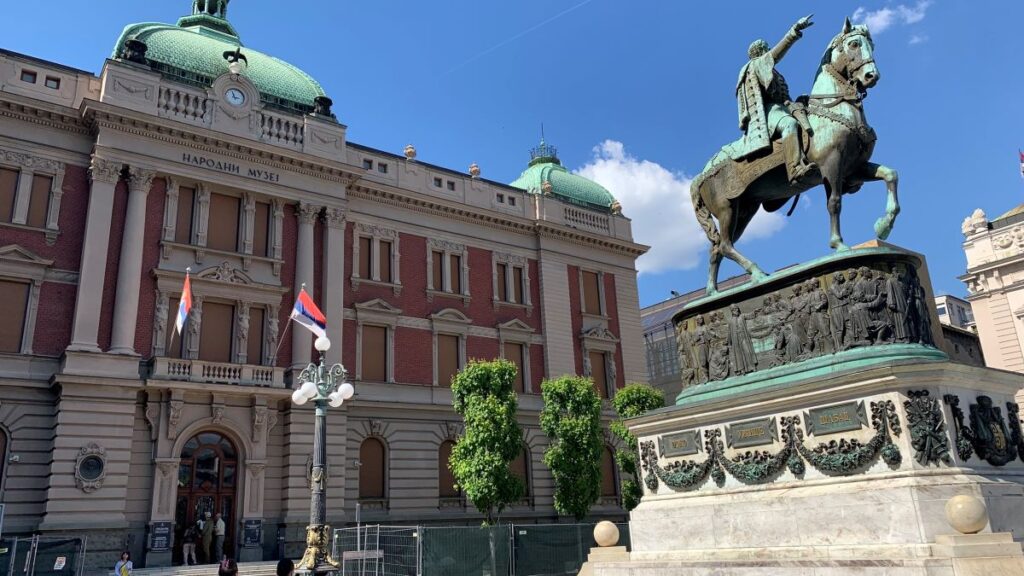
Serbia’s capital, Belgrade, sits at the confluence of the Danube and Sava rivers and buzzes with life day and night. From the historic Kalemegdan Fortress and the bustling streets of Skadarlija (the bohemian quarter), to the modern cafes and clubs along the riverside, Belgrade offers a dynamic blend of old and new.
How to get there:
Belgrade Nikola Tesla Airport connects to many European cities. Trains and long-distance buses from nearby Balkan countries also arrive at the main station.
2. Novi Sad – Culture by the Danube
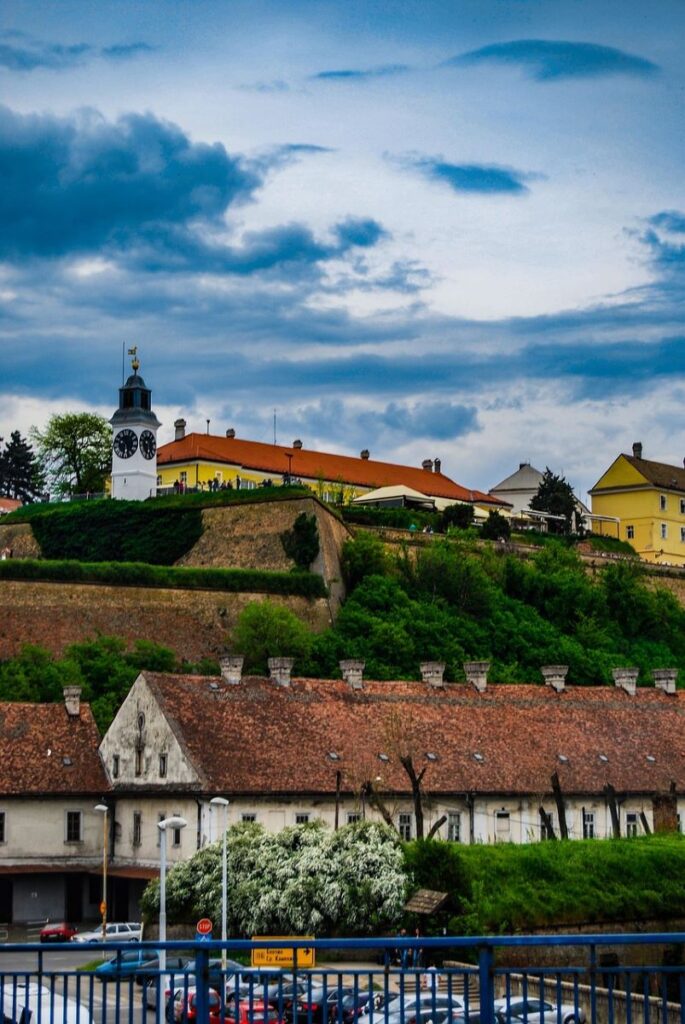
No Serbia travel guide is complete without the mention of Novi Sad. Located just an hour from Belgrade, Novi Sad is Serbia’s second-largest city and a European Capital of Culture. It’s known for the stunning Petrovaradin Fortress, great art and music scene, and the famous EXIT Festival each summer. Strolling through the charming old town or relaxing by the Danube’s sandy beaches are musts.
How to get there:
Frequent buses and trains connect Novi Sad with Belgrade. The journey takes about 1–1.5 hours.
3. Niš – History and Southern Hospitality
One of the oldest cities in Europe, Niš is best known as the birthplace of Roman Emperor Constantine the Great. Explore the Niš Fortress, the haunting Skull Tower, and nearby Niška Banja (a spa town). It’s less touristy but full of character and local charm.
How to get there:
Niš has a small international airport with flights from major cities. Buses from Belgrade take about 3–4 hours.
4. Tara National Park – Serbia’s Nature at Its Finest
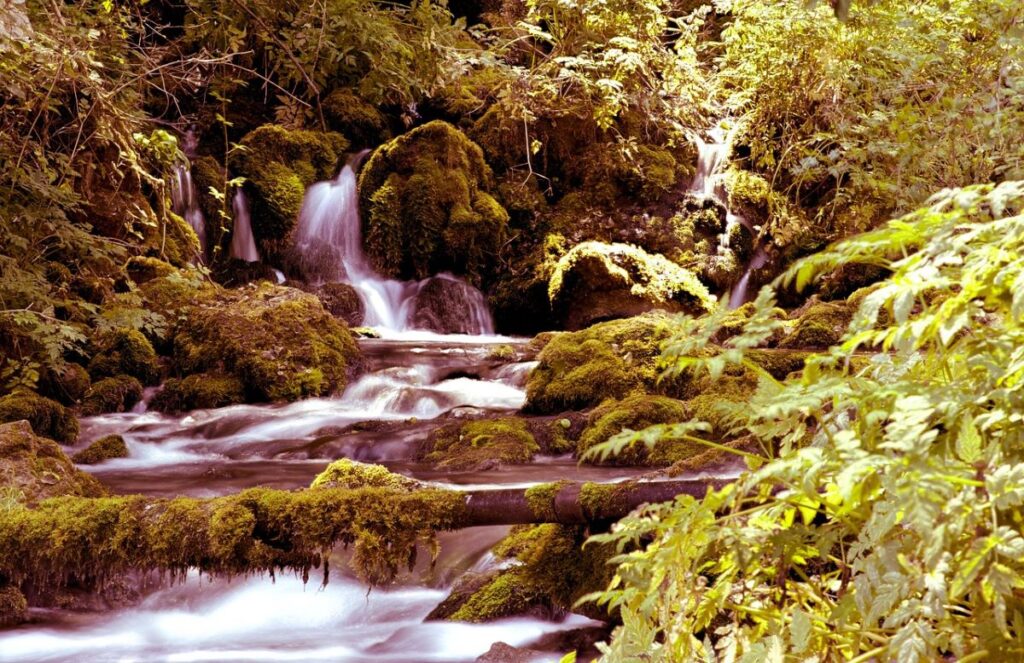
Tara National Park in western Serbia is a nature lover’s dream. Home to dense forests, pristine rivers, and the rare Balkan lynx, it’s ideal for hiking, wildlife spotting, or just unplugging from city life. Don’t miss the breathtaking viewpoint of Banjska Stena overlooking the Drina River canyon.
How to get there:
You can drive from Belgrade (about 4.5 hours) or take a bus to the nearby towns of Bajina Bašta or Užice and continue by local transport or taxi.
5. Studenica Monastery – A Spiritual and Cultural Treasure
A UNESCO World Heritage Site, the Studenica Monastery is one of Serbia’s most important medieval monuments. Surrounded by mountains, it offers a peaceful atmosphere, stunning frescoes, and deep insight into Serbia’s Orthodox heritage.
How to get there:
The monastery is near the town of Kraljevo. Buses from Belgrade to Kraljevo take about 3.5 hours, and then you can take a local taxi or transfer.
6. Subotica – Art Nouveau and European Flair
In Serbia’s north, close to the Hungarian border, Subotica stands out with its Art Nouveau architecture, colorful buildings, and multicultural charm. Visit the City Hall, the stunning Synagogue, and nearby Palić Lake for a relaxing day trip.
How to get there:
Buses and trains from Novi Sad or Belgrade make Subotica easily accessible (about 2–3 hours).
Serbian Food and Drink: Treat Your Taste Buds
Eating in Serbia is a real pleasure. Expect big portions, rich flavors, grilled meats, and plenty of pastries.
Must-Try Dishes
- Ćevapi: Small, grilled skinless sausages, often served with flatbread, onions, and ajvar (pepper relish).
- Pljeskavica: A juicy meat patty, similar to a burger but spiced and served Serbian-style.
- Sarma: Cabbage leaves stuffed with meat and rice, slow-cooked for depth of flavor.
- Pasulj: Bean stew, usually with smoked meat.
Snacks and Street Food
- Burek: Flaky pastry stuffed with cheese, meat, or spinach.
- Pita: Similar to burek, but often rolled.
Sweets and Desserts
- Krofne: Serbian doughnuts.
- Baklava: A sweet, nutty pastry, thanks to Ottoman roots.
- Slatko: Fruit preserves served on a spoon—often offered to guests as a sign of welcome.
Drinks
- Rakija: Strong fruit brandy (plum, apricot, quince). Nearly every family makes their own.
- Serbian wine and beer: Well worth sampling, especially in local taverns.
- Coffee: Thick, Turkish-style coffee is a staple. If you want instant, ask for “Nescafe.”
The Serbian Economy: What Drives the Country and What It Means for You
Serbia’s economy mixes old and new. Here’s what to expect as a visitor.
Main Sectors
- Agriculture: Still a big part of rural life—think cornfields, sunflower fields, and fruit orchards.
- Automotive, IT, and Services: Car parts, tech, and exports are booming.
- Tourism: Growing every year, with more international visitors discovering Serbia.
What Travelers Pay
Serbia is much more affordable than many European countries. Expect these average costs:
- Coffee: $1–$2 (120–240 dinars)
- Restaurant Meal: $6–$15 (700–1,700 dinars)
- Museum Ticket: $3–$8 (350–950 dinars) Hostels, hotels, and Airbnb options fit every budget, from under $20 a night for a bed to $100+ for top hotels.
Currency in Serbia: Handling Money Like a Local
What’s Used
The official currency is the Serbian dinar (RSD, or DIN). Euros and other foreign cash are not accepted in shops or restaurants.
Paying by Card or Cash
- Card payments: Widely accepted in cities and chain stores.
- Cash: Needed for small shops, markets, rural areas, and some taxis.
Exchanging Money
- ATMs: Easy to find; most accept foreign cards and dispense dinars.
- Exchange offices (“Menjačnica”): Located everywhere in cities—fair rates, quick service.
- Banks: Also offer exchange, but may charge small fees.
Tip: Avoid street money-changers.
Entry Requirements: Visas, Passports, and Recent Rules
Visas and Passport Rules
- EU, US, UK, Canada, Australia, and most other Western visitors: No visa needed for up to 90 days (tourism, family visit, business). Your passport should be valid for at least 90 days beyond your stay.
- Other countries: Check with your embassy or Serbia’s Ministry of Foreign Affairs website.
Recent Updates
Serbia may update rules—sometimes after global events or for longer stays. Always double-check before you travel. Keep proof of accommodation and travel plans—they may ask on arrival.
Other Helpful Information: Tips for a Smooth Visit
Best Time to Visit
- Spring (April–June) and Autumn (September–October): Mild weather, fewer crowds, lots of festivals.
- Summer (July–August): Hot and lively—great for city nightlife, river clubs, music festivals, and mountain escapes.
- Winter (December–February): Snowy in the mountains (ideal for skiing), cozy city vibes with plenty of indoor cafes.
Getting Around: Public Transport
- Buses and trains: Connect all cities and towns. Buses are faster and more frequent.
- Trams and trolleys: In Belgrade and Novi Sad, tickets can be bought at kiosks or inside.
- Taxis: Use registered companies (ask your hotel or use local taxi apps).
- Car rental: Available, but city traffic and parking can be tricky.
Safety
Serbia is safe for travelers. Petty crime, like pickpocketing, is rare but keep an eye on your things in busy areas. Roads can be rough in rural spots.
Local Etiquette
- Dress: Most places are casual; churches require modest clothing.
- Tipping: Not required, but 10% is appreciated in restaurants and cafes.
- Politeness: Use “Hvala” (thank you) and “Izvinite” (excuse me/sorry) often.
Staying Connected
- SIM cards in Serbia: Easy to get at airports, kiosks, or mobile shops. Popular operators: Telenor, A1, and MTS. Plans are cheap (as low as $5–$10 for several GB).
- Wi-Fi: Free in most hotels, cafes, and public spaces in cities.
Electrical Outlets in Serbia: Power Plugs and Sockets
Serbia (e.g., Belgrade) primarily uses Type F sockets (Type C and Type E plugs may fit due to compatibility). Voltage is also 230 V, frequency 50 Hz.
Voltage Compatibility
- The U.S. electrical system runs on 110–120 V, 60 Hz, whereas both Bosnia and Serbia operate on 230 V, 50 Hz.
- Most modern electronics—like smartphone chargers, laptops, cameras, tablets—are dual-voltage (e.g., labeled “INPUT: 100–240 V, 50/60 Hz”). These only require a plug adapter.
- Older or high-wattage devices (e.g., hair dryers, curling irons, older appliances, some toys/tools) may be 110 V only, and could be damaged if plugged directly into 230 V without a converter.
Closing: Ready for Your Serbian Adventure?
Serbia is a place where you’ll find great food on every table and friendly faces almost everywhere you go. If you’re about to explore for the first time, relax and enjoy the Serbian culture—there’s so much to discover here, and locals will make you feel right at home. Travel to Serbia should be on everyone’s bucket list.
Do you have questions or need any more travel tips for Serbia? Feel free to ask in the comments below, or share your own stories if you’ve already visited. Hope you found this Serbia travel guide helpful, and hope it inspires you to visit this hidden gem.
Want to know about Belgrade? Visit my post: Best Things To Do In Belgrade
Safe travels and enjoy every minute of your Serbian journey!
Recent Posts:
-
The Best Florence 3-Day Itinerary For First Timers (Landmarks, Views, And Food)
Planning a trip to Florence? Awesome! You’re in for a treat! Florence packs centuries of art, culture, and history into streets that are super easy to wander on foot. This Florence 3 day itinerary is built for first-time visitors who want the big sights, plus time to eat well, shop a little, and wander without…
-
Your Ultimate 3-Day Itinerary in Rome (First-Time Visit Guide)
Arriving in Rome, the Eternal City, for the first time feels like stepping into a living history book. I’m not kidding. Everywhere you turn you find ancient ruins, renaissance churches, and fountains, sometimes sharing the same charming streets. The city buzzes with energy, from the scooters zipping by to the lively piazzas filled with people…
-
The Ultimate Italy Travel Guide for First‑Time Visitors (Simple, Honest Tips)
Italy is one of those places that lives in your head long before you land. Ancient ruins, quiet churches, busy piazzas, long dinners, and trains that carry you from city to city like scenes in a film. When friends ask me where they should go on their first big trip to Europe, Italy is usually…
-
Travel Chiang Mai, Thailand: A Calm Base for Temples, Markets, and Food
Your Ultimate Travel Chiang Mai Thailand Guide Chiang Mai sits in a green valley in northern Thailand, ringed by low mountains and crowned by temples that have been there for centuries. Key Takeaways: This Travel Guide to Chiang Mai, Thailand also shares a simple 3-day plan you can follow without stress. The Old City, with…
-
Lake Bled Day Trip: The Perfect First-Time Adventure from Ljubljana
Welcome! If you’re spending time in Ljubljana and want to experience Slovenia’s most magical landscapes, a Lake Bled day trip from Ljubljana is an easy choice. With its glacial blue water, Lake Bled Island at its center, and Bled Castle perched high on the cliffs, this spot looks straight out of a fairytale—no need for…
-
Best Things to Do in Ljubljana, Slovenia (First-Time Visitor’s Guide)
Welcome! Thank you for visiting my blog about the best things to do in Ljubljana! In this guide I’ll share my own favorite spots and handy tips, best places to eat and some local insights you might not find elsewhere. Ljubljana, the charming capital of Slovenia, is stunning! The architecture is breathtaking! I promise you,…

